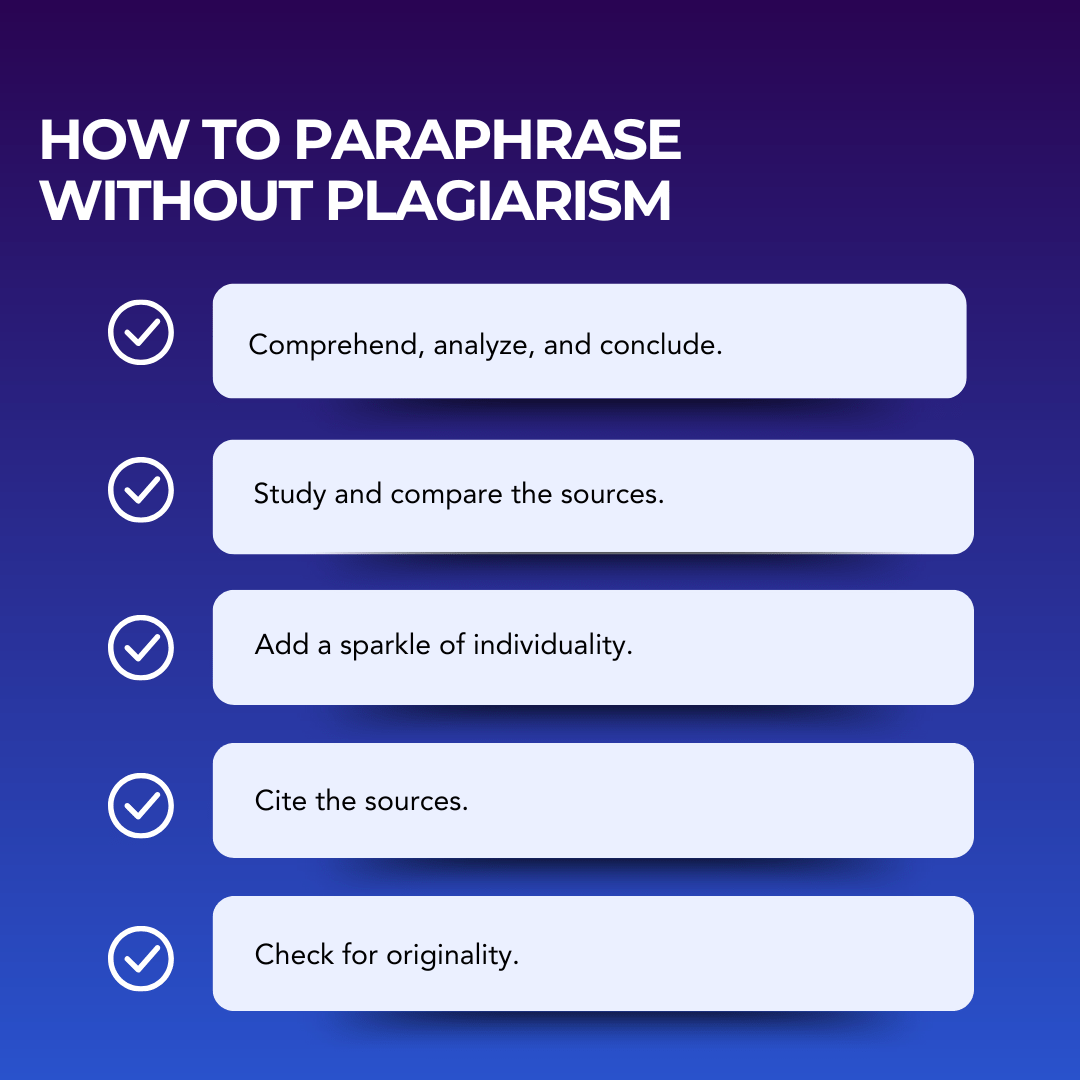We know writing can be challenging. Let alone the task of collecting and organizing the information, one needs the courage to express opinions and make an effort to meet the academic requirements, check plagiarism, and correctly attribute the sources. The writing advice sometimes makes the thing only more confusing: you need to cite every word you borrow from the sources but not overwhelm your paper with quotations; base your writing on research but not repeat it; express original ideas but provide proof; rewrite in your own words but without plagiarism… Let’s draw the line between plagiarism-causing and proper paraphrasing and see how to paraphrase for the benefit of your paper.
Is paraphrasing the way to make your paper original?
Paraphrasing, basically, is the way to incorporate the information you get from the sources you study without plagiarising. The crucial nuance is how you paraphrase, its intention, and its quality.
Let’s start with the problematic part. Synonimisation is NOT paraphrasing. If you take the source and change the words with the synonyms, alter the text structure, but add nothing and don’t mention the author, the paper will be nothing else but plagiarism with an evident attempt to hide it by some superficial edits.
What is, then, paraphrasing? Suppose you have a text you want to use in your paper – it may be research providing some facts you require for your assignment. The information you need is not just statistics numbers – this kind of data you can easily quote – but some complicated conception you want to explain. In this case, you need to work with the source. This work implies not rewriting but analyzing the text and its place in your assignment.
- Remember the bigger picture: your paper and its tasks come first; the quest of paraphrasing the source text is part of it. Think of the information you get in the context of the whole paper you craft.
- Find the gist: read the source, then reread it. Think of what information is essential for you here and why. Study other sources to get a different angle on the problem or confirm your understanding.
- Summarize: your task is to reflect the understanding of the information contained in the source and its relation to the topic you raise in your writing, not to retell the text.
Simple steps to paraphrase without plagiarism

- Comprehend, analyze, and conclude. Process the information you get from the source and focus on using it to enhance your paper. Rely on ideas, not wording.
- Study and compare the sources. The more resources you consult, the more comprehensive, informative, and objective your writing will be. It will also be easier to reflect on the subject in your own words!
- Add a sparkle of individuality. Think of the value your work brings to the reader. Find ways to elevate it with your own reflections, examples, or experiences.
- Cite the sources. Remember, even when you don’t quote someone’s work, you need to cite all the sources you’ve used for reference. Otherwise, the paper will be considered plagiarized, no matter how good your paraphrasing is.
- Use AI moderately. AI tools can significantly elevate your working routines if introduced ethically. Incorporate them for brainstorming, double-check any information you get, and cite AI as a source when you use it.
- Check for originality. It’s better to double-check than risk being accused of plagiarism. Use similarity detection tools to ensure your paraphrasing is appropriate and the paper is original.
PlagiarismCheck.org will assist you with all originality-related issues – and beyond! Try the innovative similarity detector and GPT checker, perfect your writing with Grammar Checker, and learn effortless attribution with Citation Generator. Try it for free now!






